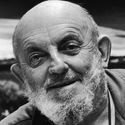
19th, 20th & 21st Century Fine Prints
707-546-7352 · fax 707-546-7924 · web: www.annexgalleries.com · email: artannex@aol.com
Ansel Easton Adams Biography
Ansel Easton Adams
American
1902–1984
Biography
Ansel Easton Adams, photographer and environmentalist, was born on February 20, 1902 in San Francisco, California, the son of Charles Hitchcock Adams and Olive Bray. An only child, Adams was born when his mother was nearly forty. He was raised in an environment that was deeply Victorian, and Adams was a solitary child; at the age of twelve, he taught himself to play the piano and read music. Although he ultimately gave up music for photography, the piano brought substance, discipline, and structure to his frustrating and erratic youth. Moreover, the careful training and exacting craft required of a musician, profoundly informed his visual artistry, as well as his influential writings and teachings on photography.
Always a lover of nature, Adams' life was, in his words, “colored and modulated by the great earth gesture” of the Yosemite Sierra; he spent substantial time there every year from 1916 until his death. There, he began using the Kodak No. 1 Box Brownie his parents had given him, joined the Sierra Club, and met his wife, Virginia Best; they were married in 1928. The couple had two children.
The 1920’s and 30’s were busy years for Adams. He made his first fully visualized photograph, Monolith, the Face of Half Dome, and gained his first patron in the person of Albert M. Bender, explored the “pictorial” style, and settled on “straight photography.” Although his work gained recognition, it did not alleviate Adams's financial pressures, compelling him to spend much of his time as a commercial photographer. Still, Adams’s technical mastery was the stuff of legend. More than any creative photographer, before or since, he reveled in the theory and practice of the medium, even creating the famous and highly complex “zone system” of controlling and relating exposure and development.
Adams felt an intense commitment to promoting photography as a fine art, as well as being an unremitting activist for the cause of wilderness and the environment. His images became the symbols, the veritable icons, of wild America. Seen in a more traditional art history context, Adams was the last and defining figure in the romantic tradition of nineteenth-century American landscape painting and photography.
Adams’s vast archive of papers, memorabilia, correspondence, negatives, and many “fine” photographic prints, as well as numerous “work” or proof prints, are in the John P. Schaefer Center for Creative Photography at the University of Arizona, Tucson. A portion of his papers relating to the Sierra Club are in the Bancroft Library at the University of California, Berkeley. Adams died in Carmel, Monterey, California on April 22, 1984.
Reference: William A. Turnage, American National Biography, Oxford University Press





